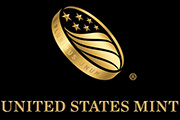El Yunque
It's Just Water
Overview
Starting with the El Yunque National Forest quarter, the students will access the national forest’s website to gather and interpret the average yearly rainfall data for national parks and sites. Using the “Rainfall Data” worksheet, the students will calculate the mean, median, mode, and range for rainfall data and create a box-and-whiskers plot for the data. The students will research why El Yunque receives so much rain and summarize their findings.
Worksheets
El Yunque National Forest Quarter Reverse
United States Map
Rainfall Data
Download/View
The file below contains the lesson plan and all the associated worksheets. When you click on the link, the PDF will open if you have the free Acrobat Reader plug-in installed. Depending on your browser's settings, the lesson plan will open in this tab, in a new tab, or in a new window.
You can then click "File" in the top menu and "Save As" to save the PDF to your hard drive or click "File" and then "Print" to print all the pages on your printer.
National Standards
Science
National Science Teachers Association (www.nsta.org)
- Unifying concepts and processes in science
- Science as inquiry
Mathematics
National Council of Teachers of Mathematics (NCTM) (www.nctm.org/)
- Students develop an awareness of the power of data analysis and probability by building on their natural curiosity about data and making predictions.
- Students explore methods of data collection and use technology to represent data with various types of graphs. They learn that different types of graphs represent different types of data effectively. They use measures of center and dispersion to analyze and interpret data.
Language Arts
National Council of Teachers of English (www.ncte.org) and International Reading Association (www.reading.org)
- Students employ a wide range of strategies as they write and use different writing process elements appropriately to communicate with different audiences for a variety of purposes.
- Students apply knowledge of language structure, language conventions (e.g., spelling and punctuation), media techniques, figurative language, and genre to create, critique, and discuss print and non-print texts.
- Students adjust their use of spoken, written, and visual language (e.g., conventions, style, vocabulary) to communicate effectively with a variety of audiences and for different purposes.
Social Studies
National Council for the Social Studies (www.socialstudies.org)
- People, Places, and Environment



